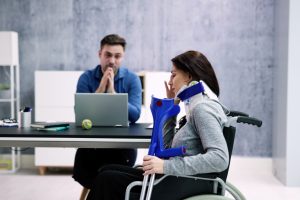As more people rely on their phones and the Internet to get legal help after accidents and injuries, it's more important than ever to stay up on the latest digital marketing trends. However, as Tom Desmond, Co-Founder of ApricotLaw, explains below, some of these practices can hurt your law firm’s image and leave you with fewer leads.
Some firms are engaging in a practice called "geofencing," which has been compared to so-called "digital ambulance chasing." This practice may seem like a great way to utilize new technology to up your digital marketing game, but make sure you’re seeking leads the right way. Practices like geofencing are often considered ethically murky and, in the long run, can hurt more than they help.
What’s Geofencing?
Geofencing is not a new practice, but it's one that some personal injury law firms have recently tried in order to reach out to injury victims. This practice makes a digital "fence" around an area, so those who enter the fence see ads for that business or firm when they’re online.
You might have noticed, for example, that you're more likely to see ads for a certain store once you've visited that store with your smartphone in hand. The same concept can be applied to other locations. In some cases, law firm marketing companies are trying to help their clients by placing these digital fences around emergency rooms and hospitals.
So, if you broke your arm and are now waiting in the ER for help, you might see ads for a local personal injury attorney. Unfortunately, this works better in theory than in practice.
How Digital Ambulance Chasing Can Hurt Your Firm
While geofencing is an effective tool to spread your law firm's name through online ads, that's not always a good thing. Unfortunately, many accident victims have felt uncomfortable or upset about these targeted ads. To some, geofencing is an invasion of privacy.
While geofencing doesn't technically violate HIPAA guidelines, many potential clients have complained about these practices. They see it as a way to take advantage of those who have been injured in an accident, and because of that, they might choose not to work with the firms that engage in this practice.
In some states, people are filing claims to prevent this practice. Some areas have outlawed geofencing around hospitals and other areas where injury victims might be. So, if geofencing isn't an option, what's the best way to get leads online and reach out to those who need a lawyer?
Getting Leads the Right Way
When you're seeking potential clients, you want them to feel that their best interests are your top priority, and geofencing doesn't give them that peace of mind. Instead, you'll need to use other tactics that will draw the right kind of attention to your firm online.
You want to make your law firm as visible as possible online, and you can do that through a long-term SEO strategy. You'll need to localize your content, for example, so people in your area can find your site easily. You’ll need high-quality backlinks from a variety of sources. You’ll need to be visible in Google Maps. These are just a few of the considerations of a healthy, ethical, long-term SEO strategy.
You want to be the first firm clients see when they decide to search for an attorney online; you don’t want to shove your services in their faces when they’re trying to recover from the pain and shock of an injury.




















